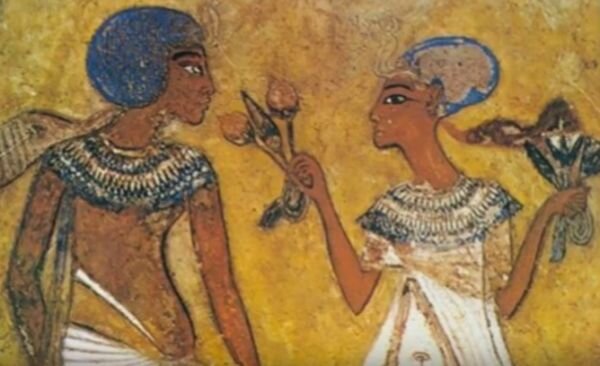The History of Giving Flowers
The practice of giving flowers is a societal way to express love, compassion, and thoughtfulness. This custom is so powerful it can even help us communicate in times when we don’t know what to say. But, where did this tradition come from? It turns out, humans have been using flowers to express emotion for a very long time. In fact, we can trace this tradition all the way back to ancient Egypt.
Egyptian drawing of woman giving a floral gift
Imagery from ancient Egypt depicts flowers being offered to the dead and laid in tombs. The Egyptians made bouquets, wreaths, garlands, floral headdresses, and more for these occasions. The Greeks and Romans also believed flowers could be used to express emotion and status. The ancient Greeks gave floral crowns to the winners of contests and competitions to signify success and victory. In Ancient Rome, lovers often conveyed their feelings by giving each other flowers, especially in the form of hair wreaths.
The Middle Ages saw the rise of plant symbolism, and flowers were given and used to convey particular meanings. This tradition continued through the Renaissance and eventually into the Victorian Era, where it blossomed into floriography (cryptologic communication through flowers). The Victorians were so fascinated by this practice that they even had floral dictionaries to decode the messages they received through flower arrangements.
Victorian women shopping for flowers
Today, the art of giving flowers is a fusion of its intricate past. Similarly to the Egyptians, we find that flowers are a touching way to express condolences. We hope to brighten the day of our loved ones through floral gifts, just like the Greeks and the Romans. And, we associate certain flowers with particular emotions and meanings, just like those in the Middle Ages and the Victorian Era (think of the red rose). Just as our ancestors did before us, we continue to let flowers help us better connect with and speak to others. Bloomaker bulbs are a beautiful gift of living and growing flowers that can often be replanted to bloom again and again.


